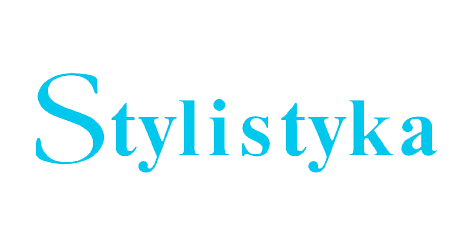Sprawozdania stenograficzne z posiedzeń Sejmu Krajowego Galicyjskiego we Lwowie, kadencje I–X, https://jbc.bj.uj.edu.pl/dlibra/publication/6196?language=pl (dostęp: 29.11.2022).
Google Scholar
Czachur W., 2020, Lingwistyka dyskursu jako integrujący program badawczy, Wrocław: Oficyna Wydawnicza Atut.
Google Scholar
Dawidziak-Kładoczna M., 2011, Wielofunkcyjność komentarzy w diariuszach Sejmu Wielkiego. – Gatunki mowy i ich ewolucja, t. 4: Gatunek a komunikacja społeczna, red. D. Ostaszewska przy współudziale J. Przyklenk, Katowice: Wydawnictwo Uniwersytetu Śląskiego, s. 147–158.
Google Scholar
Dawidziak-Kładoczna M., 2015, Językowe sygnały recepcji mów w staropolskich diariuszach sejmowych i sprawozdaniach stenograficznych z obrad sejmu, „Prace Naukowe Akademii im. Jana Długosza w Częstochowie”, XI, s. 19–32.
DOI: https://doi.org/10.16926/j.2015.11.02
Google Scholar
Dawidziak-Kładoczna M., 2018a, Opis wrażeń słuchowych w diariuszu sejmu grodzieńskiego. – Przeszłość w języku zamknięta, red. U. Wójcik, V. Jaros, Częstochowa: Wydawnictwo Akademii im. Jana Długosza w Częstochowie, s. 219–234.
Google Scholar
Dawidziak-Kładoczna M., 2018b, Przejawy świadomości językowej w zakresie stosowania perswazyjnych aktów mowy w średniopolskich diariuszach sejmowych, „Język a Kultura”, t. 28: Świadomość językowa w ujęciu antropologiczno-kulturowym, s. 87–99.
Google Scholar
Dobrzyńska T., 1974, Delimitacja tekstu literackiego, Wrocław: Ossolineum.
Google Scholar
Duszak A., 1998, Tekst, dyskurs, komunikacja międzykulturowa, Warszawa: Wydawnictwo Naukowe PWN.
Google Scholar
Dziadzio A., 2016, Galicyjski Sejm Krajowy wobec namiestnictwa w początkach ery konstytucyjnej w Austrii, „Studia Iuridicia Lublinensia”, XXV, 2, s. 262–276, http://DOI: 10.17951/sil.2016.25.3.261 (dostęp: 23.11.2022).
DOI: https://doi.org/10.17951/sil.2016.25.3.261
Google Scholar
Faulmann K., 1895, Geschichte und Litteratur der Stenographie, Wien: Verlag von Bermann & Altmann.
Google Scholar
Grodziski S., 1993, Sejm Krajowy galicyjski 1861–1918, Kraków: Wydawnictwo Sejmowe.
Google Scholar
Kalinowska A., 2011, Diariusze sejmowe, http://www.wilanow-palac.pl/diariusze_sejmowe.html (dostęp: 24.11.2022).
Google Scholar
Krieg H., 1888, Katechizmus der Stenographie, Lipsk.
Google Scholar
Łazarski R., 1968, Stenografia, t. 1–2, Warszawa: Wydawnictwa Szkolne i Pedagogiczne.
Google Scholar
Nowicki J., 1998, Diariusze sejmowe z XVIII wieku, „Mówią Wieki”, 10, s. 14–17.
Google Scholar
Partyka J., 1995, Rękopisy dworu szlacheckiego doby staropolskiej, Warszawa: Wydawnictwo Naukowe Semper.
Google Scholar
Pitman I., 1891, History of Shorthand, Bath: I. Pitman & Sons.
Google Scholar
Poliński J., 1861, Stenografia polska według zasad Gabelsbergera, Lwów: Drukarnia M. F. Poremby.
Google Scholar
Taub Sz., 1925, Dzieje Biura Stenograficznego dawnego Sejmu Galicyjskiego, Katowice: nakładem Władysława Chrapusty.
Google Scholar
Wajszczuk J., 2005, O metatekście, Warszawa: Katedra Lingwistyki Formalnej Uniwersytetu Warszawskiego.
Google Scholar
Wierzbicka A., 1971, Metatekst w tekście. – O spójności tekstu, red. M. R. Mayenowa, Wrocław: Ossolineum, s. 105–121.
Google Scholar
Wojtak M., 2001, Pragmatyczne aspekty analiz stylistycznych tekstów użytkowych. –Stylistyka a pragmatyka, red. B. Witosz, Katowice: Wydawnictwo Uniwersytetu Śląskiego, s. 38–47.
Google Scholar
Wojtak M., 2004, Gatunki prasowe, Lublin: Wydawnictwo Uniwersytetu Marii Curie-Skłodowskiej.
Google Scholar
Wojtak M., 2006, Gatunek w formie kolekcji a kolekcja gatunków, „Poznańskie Spotkania Językoznawcze”, 15, s. 143–152.
Google Scholar
Wojtak M., 2019, Wprowadzenie do genologii, Lublin: Wydawnictwo Uniwersytetu Marii Curie-Skłodowskiej.
Google Scholar
Żabowska M., 2009, Hierarchia wyrażeń metatekstowych, „Linguistica Copernicana”, 2 (2), s. 179–189.
DOI: https://doi.org/10.12775/LinCop.2009.026
Google Scholar


 https://doi.org/10.25167/Stylistyka32.2023.10
https://doi.org/10.25167/Stylistyka32.2023.10
